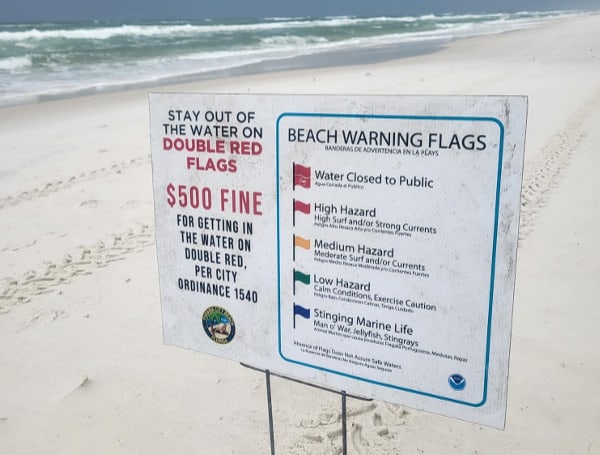Three people died Saturday in Florida after drowning in the Gulf of Mexico in three separate incidents, according to Panama City Beach Police.
WJHG reported that officers arrived at the scene of the first incident at 12:04 p.m. while PCB Beach Safety lifeguards rescuing a woman from the gulf behind Days Inn on Front Beach Road.
Officials say the woman was brought to shore but was unresponsive and life-saving measures were started.
The woman was transported to a local hospital and pronounced dead.
In the news: Police Looking For Couple Who Broke Into Winter Haven Tennis Center Stealing Dumbells, Cash
The victim was identified as Kimberly Ann Mckelvy Moore, 39, of Lithonia, Georgia.
At 1:13 pm, officers arrived at the second incident, where PCB lifeguards were rescuing an unresponsive man who was brought to the shore.
He was transported to a local hospital and also pronounced dead. The man was identified as Morytt James Burden, 63, of Lithia Springs, Georgia.
The third incident happened at 4:23 pm when police arrived as lifeguards were rescuing 68-year-old Donald Wixon of Canton, Michigan.
Wixon was also brought to the shore and was unresponsive. He was transported to a local hospital, and he was also pronounced dead.
Officials posted double-red flag warnings when the drownings occurred, which means the water is closed to swimmers. Most likely to rip currents.
In the news: In Excess Of 50 Arrested In Florida Joint Drug Trafficking Sting Operation
A rip current is a narrow, fast-moving water channel that flows from the shore, perpendicular to the shoreline. Rip currents can be very strong, and they can quickly pull swimmers away from shore. They are the leading cause of ocean drownings in the United States.
Rip currents form when waves break near the shoreline, piling up water between the breaking waves and the beach. This water then has to find a way to get back out to sea, and it does this by flowing through rip currents. Rip currents are usually located in areas where there are sandbars or other underwater structures that create a channel for the water to flow through.
There are a few things you can do to stay safe from rip currents:
- Before you go in the water, check with a lifeguard to see if there are any rip currents present.
- If you see a rip current, don’t try to swim against it. Rip currents are very strong, and you will only tire yourself out.
- If you are caught in a rip current, stay calm and float. Don’t try to swim back to shore against the current. Instead, swim parallel to the shoreline until you escape the current’s pull.
- Once you have escaped the current’s pull, swim at an angle away from the current toward shore.
- If you are unable to escape the current on your own, call for help.
Here are some signs that you may be in a rip current:
- The water is darker and deeper than the surrounding water.
- There are fewer breaking waves.
- The water is moving in a smooth, even flow.
- You see foam or debris flowing away from shore.
If you see any of these signs, it is important to get out of the water immediately. Rip currents can be very dangerous, but they are also very survivable if you know what to do.
Android Users, Click To Download The Free Press App And Never Miss A Story. Follow Us On Facebook and Twitter. Signup for our free newsletter.
We can’t do this without your help; visit our GiveSendGo page and donate any dollar amount; every penny helps.


